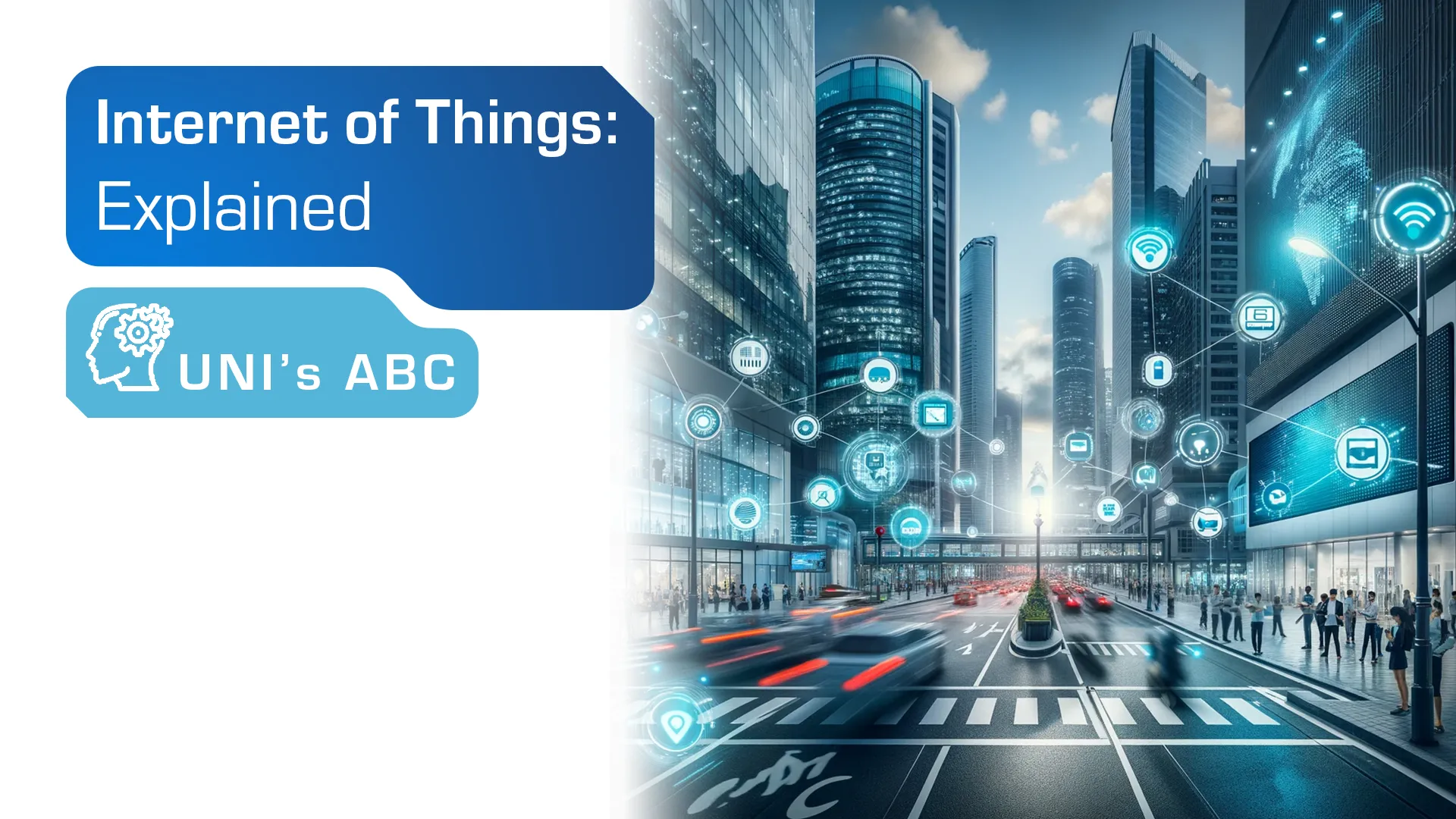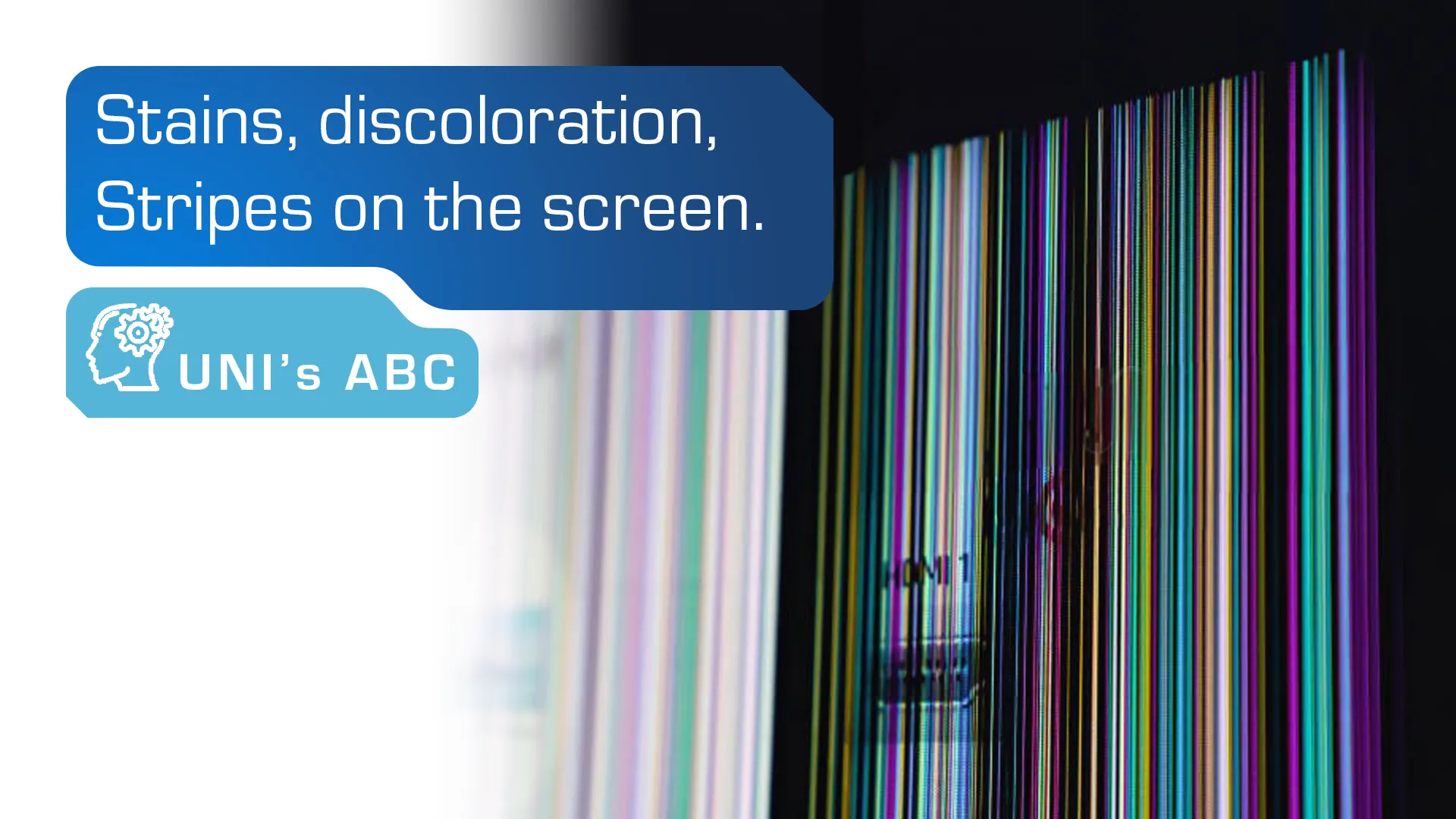
For a few years, one can notice the intensified interest in EPDs (Electronic Paper Displays). They are more and more often used in various applications, e.g., digital signage, so in a broad sense in public space. USECs and USEMs are two display solutions based on E Ink’s EPDs developed by the Unisystem’s team. They can also be used by companies that do not have appropriate resources, both human and equipment.
Table of Contents
The history of e-paper displays began in the seventies of the 20th century when Nick Sheridon developed Gyricon, the first type of E-paper. These modules consist of spheres, so-called Janus particles, by half-formed of the positively charged white plastic and the negatively charged black plastic; each sphere is suspended in a bubble of oil – when the voltage is applied, it can rotate, exposing white or black side.
In USECs and USEMs, we use other types of e-paper displays – a modified version of EPDs developed in the nineties of the 20th century by Joseph Jacobson, the E Ink’s founder. Their operation is based on electrophoresis – the motion of dispersed particles relative to a fluid under the influence of an electric field. This type of e-paper display consists of capsules with positively and negatively charged ink particles suspended in a mixture of oil and water. When the voltage is applied, the ink particles move up and down within the capsule, creating the expected image.
E-paper technology is continuously upgrading, especially in the field of color solutions. In 2016, E Ink presented for the first time Advanced Color ePaper (ACeP), the newest color EPD. Currently, the subsequent variant of color e-paper is developed – a 28-inch E Ink Gallery.
The advantages and disadvantages of EPDs
Before we decide which display technology will be best for the designed application, we should consider the environmental factors that may impact the functioning of the module – these are not only temperature or humidity, but also, e.g., brightness, the amount of light energy that reach an object, in this case – a display. Provisionally, we can assume that e-paper can be used in all spaces, where paper can be used – they have a lot in common. Let’s imagine that we want to read a newspaper – we can do it traditionally with its paper version or electronically with its e-paper version. In both cases, the published articles will be perfectly readable, regardless of the viewing direction. The only requested condition is access to the proper lighting – a source of light (it may be solar radiation). It is worth noticing that there is no backlight in e-paper displays – only a little bit of power is consumed when the images change. The content is sustained without any electrical energy, which makes EPDs an energy-efficient solution.
Discourage to implement e-paper displays may be the process of content refreshing, which is not always esthetic – the ink particles are applied in layers, so, e.g., in tricolor solutions, the final image is obtained after a few seconds. What is more, the content’s rapid changes may conduce to the occurrence of previously presented images’ relicts, so-called ghosting, caused by ink particles’ imperfect movements. A lot of problems may also reveal during the implementation of e-paper displays in the end devices. The EPDs are based on the fragile glass bed sensitive to mechanical damages. It is widespread in the case of applications that require at least 10-inch solutions; their thickness is usually about 1.0 mm, e.g., the thickness of 13.3-inch ED133UT2 comes to 0.76 mm. It is an atypical case, in which the module’s thickness is an advantage and disadvantage at once. Moreover, the e-paper displays may not be commonly used due to the limited temperature range, usually between 0 and 50°C. We may think of them as indoor, not outdoor solutions (especially in our climate zone).
USECs and USEMs by Unisystem
USEC is a series of e-paper displays integrated with Unisystem’s controllers. We developed three types of controllers: 1) for black and white 7.8-, 9.7-, and 11.3-inch displays; 2) for 13.3-inch black and white, as well as tricolor, that is black, white and red, displays; 3) for 31.2-inch black and white, as well as color displays. Each variant can be operated via the USB or SPI interface. All of Unisystem’s controllers operate in a few modes that enable to refresh images both wholly and partly while getting rid of ghosting. There is, e.g., Animation mode, a flashless one, adapted to display simple black and white animations. The response time of the matrix in this mode is about 120 ms at 25°C. (Click here to watch a video with an adventure of Simon’s Cat played on one of the E Ink’s EPDs – yes, we did it.)
USEM is a series of 13.3- and 31.2-inch e-paper displays integrated with Unisystem’s controllers and Unisystem’s open frame type enclosures. They have been invented to facilitate the implementation of e-paper displays in end devices. In these solutions, the display’s surface is combined with the UV filter layer set between two 2-mm sheets of glass to prevent the matrix’s bleaches and module’s damages. We assemble all of these components by optical bonding, which, e.g., prevents fogging caused by contamination, e.g., dust and humidity getting in through the slits of the modules.

There is also another mentioned problem, that is the limited operating temperature, but we are working on it. Currently, we test some solutions with a coil heater. They look quite promising.
The exemplary applications with EPDs
The e-paper displays are commonly connoting e-readers – they are most often used in such devices, which also more and more often support color publications. (Recently, another color e-reader has appeared on the market; it uses one of E Ink’s color e-paper displays – Kaleido.)
We can list other applications that take the benefits of e-paper displays. EPDs are often used in digital signage, e.g., in transportation as timetables (you can also find such examples of EPDs implementation in one of the passenger information systems in Poland). The e-paper displays are also applied in retail – in this case, they are usually used as price tags but might also be used as advertising media. In retail, especially popular are color solutions as, e.g., 13.3-inch AC133UT1 by E Ink. Currently, we also develop USECs and USEMs based on AC133UT1. We do our best, so it could be provided as soon as possible. It is also worth noticing that e-paper displays are applied as screens in various kiosks and totems, e.g., information points. They also can be operated by touch. We can combine e-paper displays with touch sensors and protective glass. It is an additional service that can be outsourced to Unisystem (contact us to get a quotation).
We believe that our engagement in designing and producing USECs and USEMs will further popularize e-paper technology. It may also be compounded by the pro-ecological attitudes promoted in the society; all in all, the energy-efficient EPDs may be a genuine alternative for, e.g., LCDs.
Contact us to check the availability of Unisystem’s USECs and USEMs.
2020-12-08
Recent Knowledge

Internet of things, what it is and examples of industrial applications
The Internet of Things (IoT) is one of the most promising and rapidly developing technologies of recent years. Its application in business brings great opportunities to optimize processes, reduce costs […]

Stains, discoloration, stripes on the screen – how to identify and repair defects in industrial displays?
The dark spot on the iPhone screen, the black spot on the TV, the colored spots on the phone screen, the yellow spot on the display … Problems with screens […]

Basic electronic components in industry – a guide for beginners
Electronics has played an extremely important role in all branches of modern industry for many years. It allows automation of production processes, precise control of machines and equipment, collection and […]

Optoelectronics – basic information and example applications
Optoelectronics is the branch of electronics that deals with the conversion of electricity into light and light into electricity using semiconductor materials called semiconductors. Semiconductors are crystalline solid materials with […]



